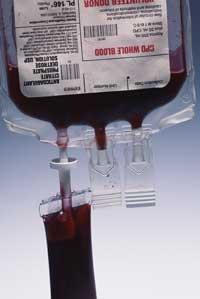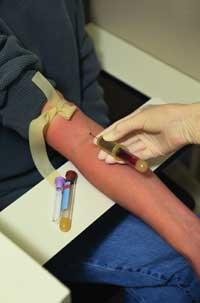Long background race in search of artificial blood
Nothing more to know that the blood circulates throughout the body began the race to find its substitute. The doctors reached the first blood transfusion in 1667, but the receptors died. Consequently, it was chosen not to perform blood transfusions (at least until deeper studies). However, since 1868, researchers began to use solutions with hemoglobin. Hemoglobin is a protein that carries oxygen in the red blood cells of the blood. In 1883 the Ringer solution of sodium chloride, potassium and calcium was prepared. It was a great leap to overcome the hemorrhages, since it solved the decrease of pressure that implies the loss of blood. Later, the doctors added lactate and it is still the most used solution to reconstruct the volume of blood.

The investigations had a great boost during World War II, but the Vietnam War was the one that revealed the limits of blood transfusions. In addition, in the 1980s, when hepatitis spread considerably and the HIV virus appeared, the number of blood donors decreased significantly and the research phase re-emerged.
As for blood transfusions, after long years of research dragging, since the researchers understood well the mechanisms between the coagulation, the bacterial contamination and the different blood groups, they have used a lot, in case of severe bleeding, because the blood is still the most appropriate option –and often the only one–.
But the researchers do not surrender so easily and continue to seek the substitute for blood. To do this, products are being designed that temporarily increase the oxygen transport capacity of the red blood cells.
One of the products that have been studied based on human hemoglobin is Baxter's HemAssist, for DCLHd scientists (diaspirin cross-linked hemoglobin). In the tests carried out in clinical studies, the mortality rate was higher than expected, which put into doubt the efficacy and safety of the product.
For this reason, since 1998, research has been exploring a new way. The idea is to introduce genetic information into DNA to make a protein. Thus, DNA would give the cell the order to produce protein. In the case of blood, the protein to produce would be hemoglobin. In addition, the modification of the molecular structure of hemoglobin can lead to a hemoglobin that responds to specific clinical signs.
Race between medicine and cycling

Artificial blood is being designed to be used as a substitute for blood in case of emergency, but in this career medicine, as in other occasions, has been left behind the elite sport. In fact, although clinical research shows negative results, cyclists use Hemassista to equip, as in the case of Giro. According to doctors, the artificial irruption of any substance that the body produces naturally is always a danger, and if in this case you can't speak for sure, it can cause the explosion of red blood cells.
Another product used in cycling is RSR13. Like Hemassista, red blood cells cause a greater release of oxygen. You can catch the pill or vein, but it is still in research phase. It has mainly been designed to improve cancer healing treatments and to use anoxia in severe cases. For the moment, he has treated cancer patients who are undergoing radioactive treatment and has given a good level of tolerance, although it is too early to fully confirm its effectiveness.
Disadvantages of blood transfusionsIn the case of severe bleeding, blood remains the most appropriate option – and often the only one –. Therefore, it is important to maintain and increase the number of donors, but the blood has many disadvantages: in summer the number of donors decreases considerably, it is not possible to store more than six weeks, it is difficult to know the compatibility of the blood groups of the donor and the receiver in case of emergency, and in addition, the transportation of the blood bags in the ambulance is not comfortable, since they must be kept at low temperature. In addition, one in ten blood receptors undergo post-transfusion reactions, even if they are not serious. |
Buletina
Bidali zure helbide elektronikoa eta jaso asteroko buletina zure sarrera-ontzian











